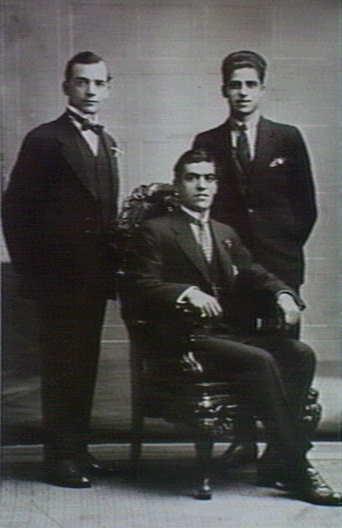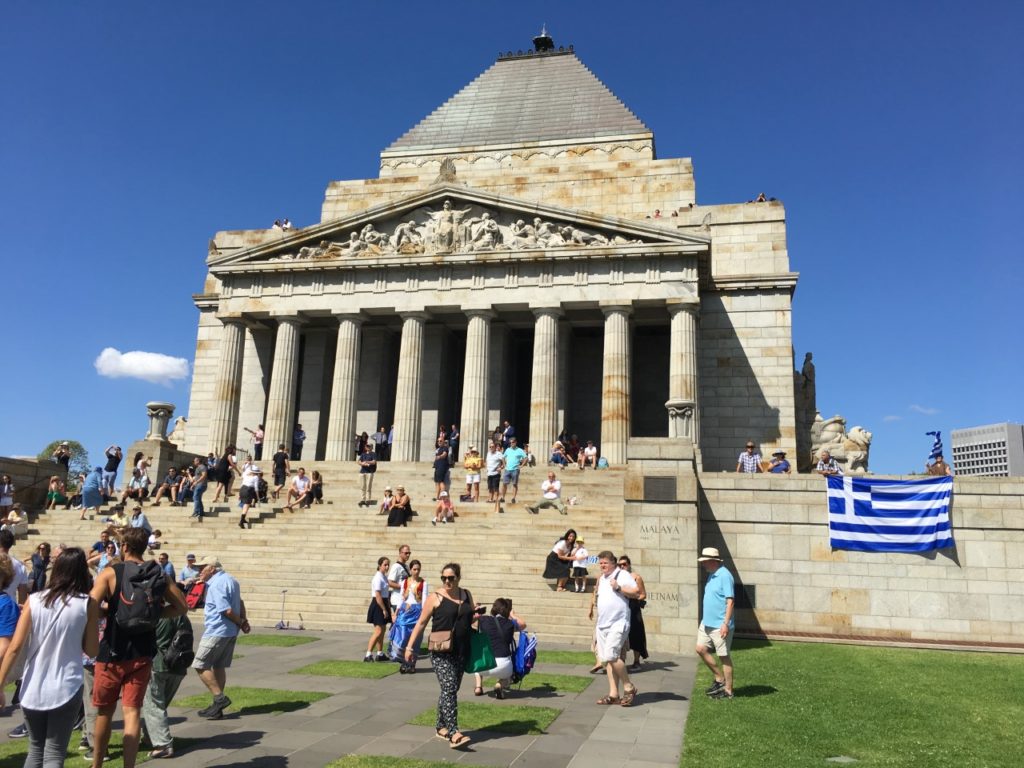Australia – Greek Diaspora History
Greek Immigration to Australia
A Timeline of Greek Immigration to Australia
Greek immigration to Australia first commenced in 1829 and continues right through to today, with Greek Australians making up the seventh largest ethnic group in Australia at approximately 400,000. Find out how and why your ancestors relocated in the timeline below of Greek immigration to Australia.
1820 – 1850
The first known Greeks in Australia arrived in 1829 and were a group of seven sailors. The sailors were transported to New South Wales to serve a sentence for piracy handed down by a British naval court. The sailors were eventually pardoned, but two decided to stay and settle.
1850 – 1870
The next Greeks in Australia arrived during the gold rushes of the 1850s and established the first Greek diaspora communities in Victoria. Most of the Greeks arriving in Australia at this time were men, with plans to return to their homeland.
1870 – 1890
The Greek population in Victoria was just under 150 by 1871, with 127 men and only 19 women. After the gold declined, those who stayed found work in restaurants, cafes and shops.
1890 – 1900
Through the 1890s more Greeks arrived in Australia, mostly relatives and fellow townspeople of the Greek settlers already established in Australia. The first Greek Orthodox diaspora community was officially founded in 1897 in Melbourne.
The first Greek Orthodox church in Australia, named after the Holy Trinity, was built on Bourke Street in Surry Hills in Sydney in 1898.
1900 – 1910
In 1900 the first Greek Orthodox Church in Victoria was established in East Melbourne – the church of the Annunciation. The following year in 1901, the Australian Census recorded 878 Australians were born in Greece. Many Greek Australians were owners or employees at shops and restaurants, and some were cane cutters in Queensland.
1910 – 1920
The number of Greeks in Australia came to 2,000 in 1911. In 1913, the first Greek language weekly newspaper – Australis was issued. The following year WWI broke out. Greece remained neutral and in 1916, the Australian government responded by placing a special prohibition on the entry of Greeks to Australia. Even after Greece joined the war on the side of the allied forces in 1917, the prohibition remained active until 1920.

1920 – 1930
There was a substantial increase in Greek immigration to Australia in the years between the two World Wars. This was largely as a result of the Greek, Armenian, and Assyrian Genocide in Turkey. Other factors included the 1923 population exchange between Greece and Turkey, and immigration quotas imposed by the U.S. in the early 1920s. A quota system however, limited the number of non-British immigrants to Australia, Greeks included. Between 1925 and 1929 Greek immigration to Australia was capped at 100 people per month.
1930 – 1940
Greek immigration to Australia declined throughout the 1930s. Assisted migration schemes came to a halt and did not resume until 1938.
1940 – 1950
After WWII, the Greek Government was struggling with post-war reconstruction and encouraged immigration. Greeks were among one of the main European races picked by the Australian government’s “Populate or perish” immigration scheme. The Greek Civil War between 1946-1949 also led to large numbers of Greeks migrating to Australia. In 1947 the number of Greek immigrants to Australia came to 12,000.
1950 – 1960
Post WWII Greek immigration to Australia continued to increase, in particular after 1952 when the Australian Government provided assisted passage to tens of thousands of Greeks. During the 1950’s the large Greek diaspora community in Australia began making a substantial impact in the country. Greek Australian immigrants continued to establish restaurants, as well as establishing their own Football (Soccer) clubs. Sydney Olympic FC (Pan-Hellenic) was founded in 1957, Heidelberg United FC (Alexander the Great) was founded in 1958, and South Melbourne FC (Hellas) was founded in 1959.
1960 – 1970
Greek immigration to Australia expanded rapidly through the 1960s, in particular in the late 1960’s. Reasons for Greek immigration to Australia during this period included the Greek military junta of 1967-1974. West Adelaide SC (Hellas) was founded in 1962. Many Greek Australian immigrants will have fond memories of the ships that brought them to their new homeland in the 1960’s, none more iconic than the Patris.
1970 – 1980
In 1971, Census data showed that the number of Greek Australians born in Greece came to 160,200 – with 47% living in Melbourne. Greek immigration to Australia declined during the 1970’s, with Greeks preferring to migrate to other countries in Europe rather than Australia. There was however a substantial increase in the Greek Cypriot immigration to Australia in the 1970’s following the Turkish invasion of Cyprus in 1974. This resulted in the Greek Cypriot diaspora community doubling in Australia during the 1970’s.

1980 – 1990
With Greece joining the European Union in 1981 and the new Schengen Agreement established in 1985, it was easier for Greeks to travel, work, and live in other European Union member states. As a result, Greek immigration to Australia continued to decline in the 1980’s.
1990 – 2000
Greek immigration to Australia continued to decline in the 1990’s.
2000 – 2010
The turn of the millennium brought with it great prosperity for Greece. Greek immigration to Australia slowed down and in fact saw many Greek-Australians immigrate back to their homeland to discover and reconnect their ancestral roots. 2004/2005 was the peak of success and immense pride for Greeks worldwide, first winning the 2004 UEFA Euro Cup, then weeks later showcasing the Olympic Games in their birthplace, and finally winning Eurovision. This was short-lived though, with the global financial crisis of 2008. Greece was one of the countries most impacted by the crisis.
2010 – 2020
As a result of the economic crisis, Greek immigration to Australia resurged in the 2010’s. This included Greek Australians which had gone to Greece before the crisis and also the arrival of many newcomers. In 2011, Census data showed that the number of Greek Australians born in Greece came to almost 100,000 – with 50% living in Victoria.
The Greek diaspora community in Australia however includes many more than just those born in Greece. The Greek population in Australia is currently estimated at approximately 400,000, with some estimates reaching more than 600,000. Most Greeks in Australia are located in Melbourne, which also happens to be the city with the largest Greek-speaking population outside Greece.
Do you have a connection to Greek Diaspora in Australia? Trace your ancestry to find out. There are a number of DNA tests available but the most common and most trusted of them all is Ancestry.com
